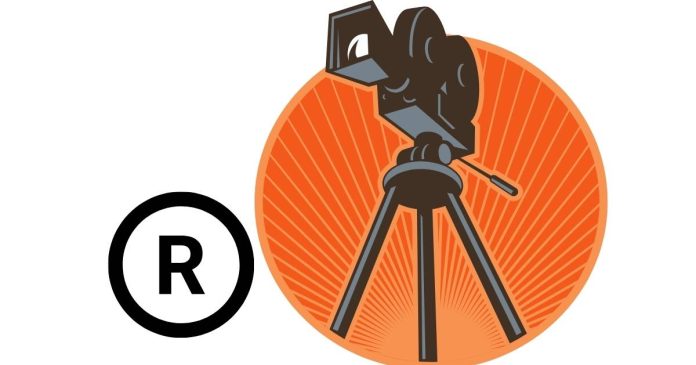The Motion Picture Association (MPA) is an organization that assigns ratings to films in the United States, helping audiences make informed choices about what they watch. One of the most widely recognized ratings is the R rating, which is frequently used to categorize films with content that may not be suitable for all audiences. But what exactly does the “R” rating mean, and what kind of films receive this classification?
Let’s look at the meaning of the R rating, its implications, and the types of content typically associated with films that carry this rating.
Understanding the R Rating
The R rating, which stands for “Restricted”, is assigned by the Motion Picture Association (formerly known as the MPAA) to films that contain material considered inappropriate for children or young audiences. The R rating signals that the film includes content that may be unsuitable for viewers under the age of 17 or 18, and parents are strongly urged to use discretion when deciding whether the film is appropriate for their children.
In general, an R-rated film may include one or more of the following elements:
- Strong language: Frequent use of explicit or offensive language, including curse words or derogatory terms.
- Graphic violence: Intense or disturbing depictions of violence, which may include blood, gore, or mutilation.
- Sexual content: Explicit sexual scenes or nudity, often involving graphic depictions of intimate behavior.
- Drug use: Depictions of illegal drug use, substance abuse, or addiction.
- Thematic elements: Mature themes, such as mental illness, crime, or controversial social issues, that may be difficult or inappropriate for younger viewers to process.
Who Can Watch an R-Rated Movie?
An R-rated movie is generally restricted to viewers aged 17 or older unless accompanied by a parent or guardian. This means that individuals under 17 may not be allowed to see the film in theaters without a parent or guardian present. However, the specifics can vary by location and the discretion of individual theaters, as some might enforce stricter age restrictions.
The R rating is often a point of confusion for parents, as it can range from films with moderate levels of mature content to those with extreme violence or explicit sexual scenes. It’s important for parents to read reviews or check the movie’s content descriptors before allowing their children to watch an R-rated film.
How Does the R Rating Compare to Other Movie Ratings?
The R rating is one of several classifications assigned to films in the United States by the Motion Picture Association. Here’s a breakdown of how it compares to other ratings:
- G (General Audience):
- These films are suitable for all audiences, including children. They contain no inappropriate content and are generally family-friendly.
- PG (Parental Guidance):
- PG-rated films may contain mild language, some action, or brief moments of mature content. While generally suitable for children, parental guidance is suggested for younger viewers.
- PG-13 (Parents Strongly Cautioned):
- PG-13 films may contain more intense or disturbing content than a PG-rated film, such as more language, violence, or sexual content. Parents are strongly cautioned, as some material may be inappropriate for children under 13.
- R (Restricted):
- Restricted to viewers aged 17 and older (or under 17 if accompanied by an adult). These films may contain strong language, graphic violence, explicit sexual content, or drug use.
- NC-17 (No One 17 and Under Admitted):
- Films rated NC-17 are considered too explicit for anyone under the age of 17, and they often involve extreme sexual content or graphic violence. This rating indicates that the film is intended for adults only.
Examples of R-Rated Movies
Many famous and critically acclaimed films have received an R rating. These films often push boundaries in terms of content, taking on darker, more mature themes or displaying elements that are not typically seen in family-friendly movies. Some examples include:
- “The Godfather” (1972) – A classic crime drama with intense violence and mature themes about organized crime.
- “Pulp Fiction” (1994) – Quentin Tarantino’s iconic film known for its strong language, graphic violence, and unconventional storytelling.
- “Deadpool” (2016) – A superhero movie that incorporates humor, violence, and sexual content, which is uncommon in mainstream superhero films.
- “Joker” (2019) – A psychological drama that deals with mature themes of mental illness, violence, and social alienation.
- “Schindler’s List” (1993) – Steven Spielberg’s portrayal of the Holocaust, which includes disturbing depictions of violence and human suffering.
Why Do Movies Get an R Rating?
Movies are rated based on their content, and the R rating is applied when the content is deemed to be inappropriate for younger audiences. Filmmakers often choose to push the limits in terms of violence, language, and sexuality to make the film feel more authentic or to tell a more serious or dramatic story. Sometimes, films may receive an R rating because they tackle difficult and controversial topics, such as mental illness, crime, or social issues.
It’s worth noting that the rating system is subjective, and what one person finds acceptable for an audience may differ from another’s opinion. The R rating helps give potential viewers a heads-up so that they can make informed decisions based on their comfort level or personal preferences.



